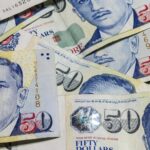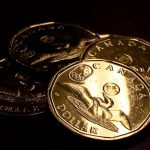The euro regained ground against the US dollar on Friday, after retreating yesterday from the strongest level since October 2011, following comments by the ECB President Mario Draghi that the central bank is closely monitoring gains in the 18-nation common currency.
EUR/USD touched a session high at 1.3896 at 10:15 GMT, after which the pair consolidated at 1.3894, adding 0.18% for the day. Support was likely to be received at March 13th low, 1.3845, while resistance was to be encountered at March 13th high, 1.3966, also the pairs strongest since October 2011.
The euro regained ground against the US dollar after retreating from 2-1/2-year highs yesterday, when ECB President Mario Draghi commented the central banks forward guidance may play a decisive role in weakening the 18-nation common currency and lowering real interest rates. ECBs forward guidance says that central bank officials will maintain official interest rates at present or even lower rates for a prolonged period of time.
Draghi said yesterday that while the exchange rate is not part of the prerogatives of the ECB, the currency level became “increasingly relevant in our assessment of price stability.”
Forward guidance “creates a de facto loosening of policy stance, as real interest rates are set to fall over the projection horizon,” Draghi said in Vienna yesterday, cited by Bloomberg. “At the same time, the real interest-rate spread between the euro area and the rest of the world will probably fall, thus putting downward pressure on the exchange rate, everything else being equal.”
However, demand for the 18-nation common currency continued to be supported after the Governing Council of the ECB refrained from easing monetary policy last week and maintained its benchmark interest rate at a record-low 0.25% and said the euro area economy is recovering in line with the central bank’s baseline scenario.
The ECB also predicted that inflation will gradually accelerate. According to central bank’s estimates inflation in the euro area, which was at 0.8% last month, will accelerate to 1.7% in the fourth quarter of 2016. The cost of living will rise 1% this year, while it will accelerate to 1.3% in 2015 and an average 1.5% in 2015.
While the recovery remains fragile, with inflation still less than half the ECB target of 2%, which the central bank uses to define price stability, economic data in the past four weeks seemed encouraging. Gross domestic product in the 18-nation common currency area rose 0.3%, more than analysts had projected, mainly driven by stronger expansions in Germany, France, Netherlands and a return to growth in Italy. In addition, economic sentiment jumped to more than a 2-1/2-year high last month, while services and manufacturing output surged the most since June 2011.
Meanwhile, the US Census Bureau reported yesterday that retail sales in the US increased 0.3% in February, exceeding analysts’ expectations of a 0.2% gain and after a 0.6% drop in January that was larger than the 0.4% decline reported earlier. Core retail sales, which exclude the volatile automobile sales, rose 0.3% in February, above analysts’ projections for a 0.1% gain and after a 0.3% drop in the previous month, that was larger than initially reported. Retail spending is regarded as a key economic indicator as it accounts for almost 70% of the US economy.
“Consumer confidence has been pretty resilient throughout this entire period,” Guy Berger, an economist at RBS Securities Inc. in Stamford, Connecticut, said before the report, cited by Bloomberg. “Equities have been up a little bit for the year, so the wealth effects are still relatively favorable.”
A separate report showed the number of people filing for unemployment benefits unexpectedly declined last week, reaching the weakest level since late November. Initial jobless claims dropped to 315 000 from 324 000 a week ago, compared to analysts’ projections of an increase to 330 000.
Elsewhere, USD/JPY touched a session low at 101.50 at 06:25 GMT, after which the pair consolidated at 101.60, losing 0.2% for the day. Support was likely to be received at March 4th low, 101.42, while resistance was to be encountered at March 13th high, 102.86. The yen headed for a 1.6% weekly increase, the biggest since the five days through January 24.





